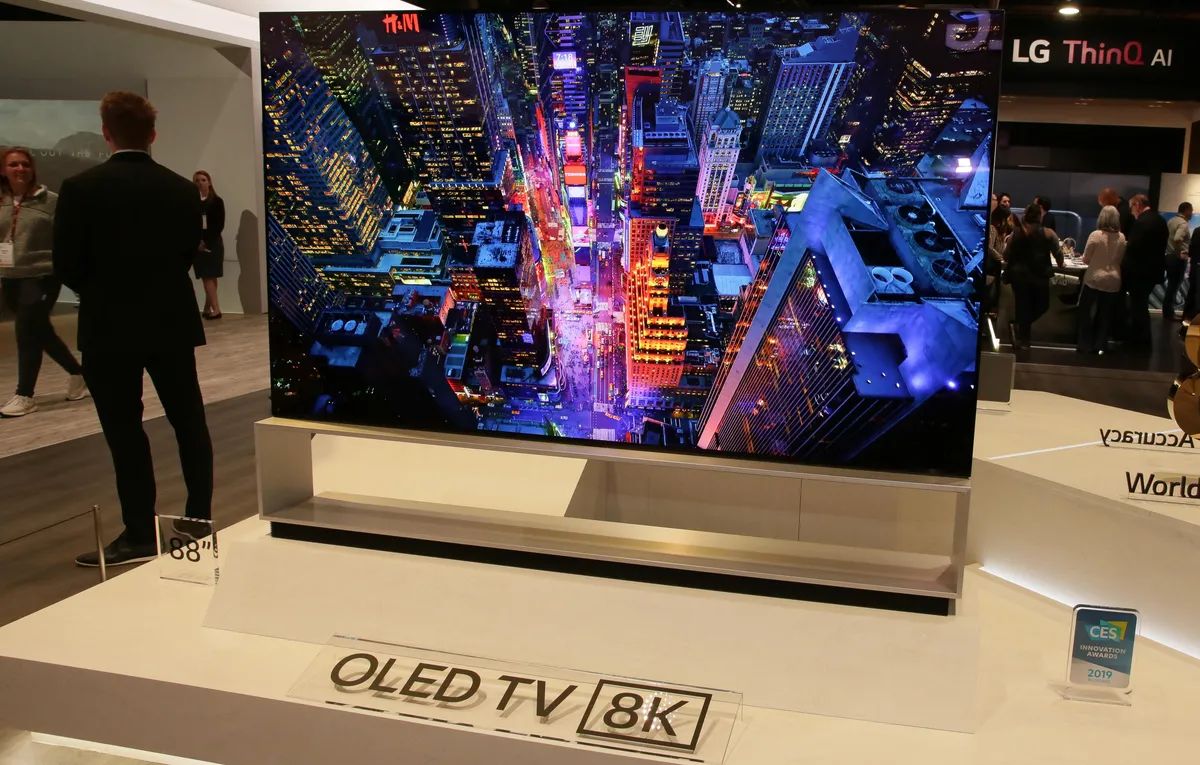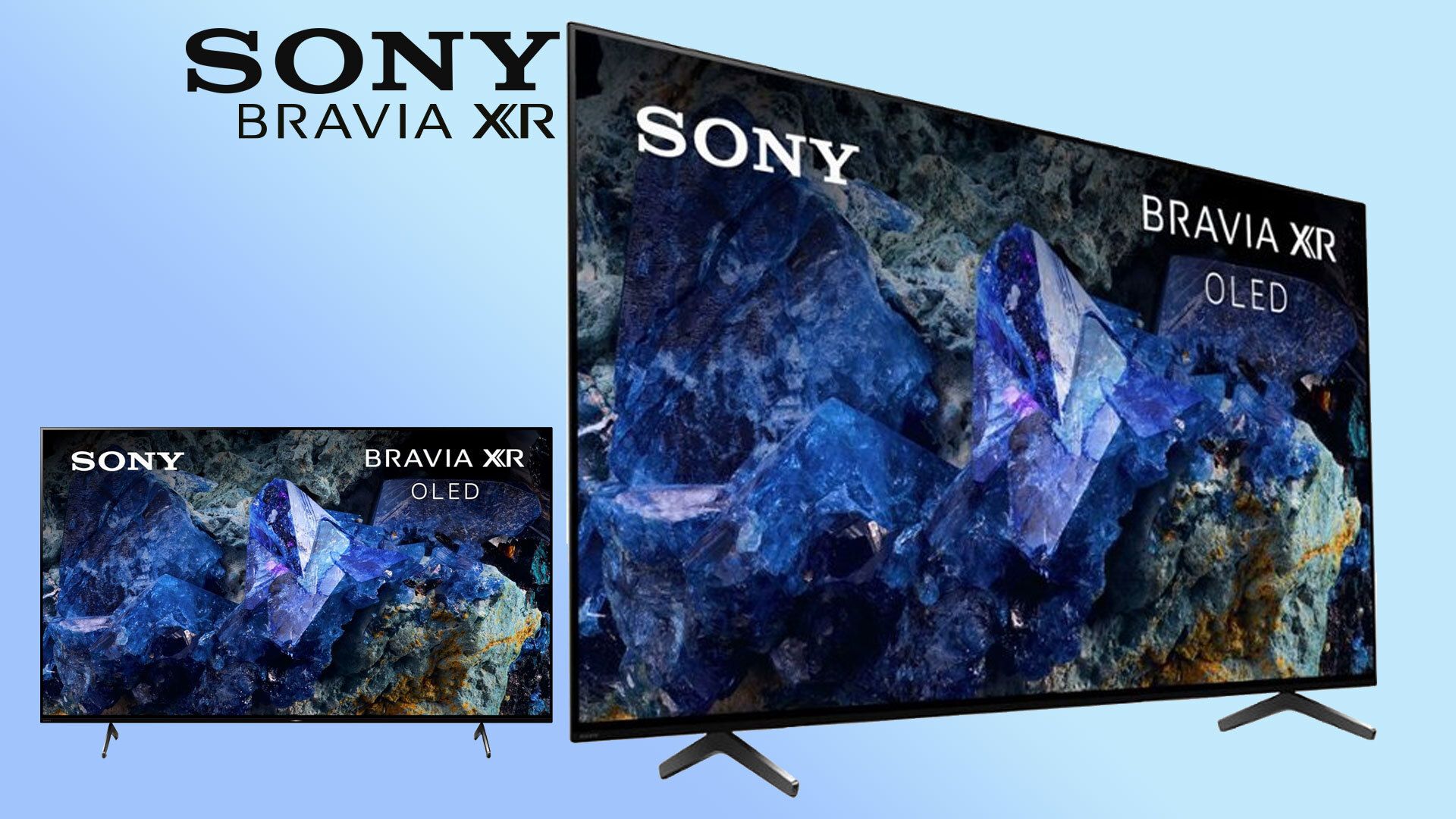Introduction
OLED (Organic Light-Emitting Diode) technology has revolutionized the display industry with its vibrant colors, high contrast ratios, and slim design. These displays have become the gold standard in televisions, smartphones, and other electronic devices. But who exactly is behind the creation of the first OLED TV?
The journey of OLED technology dates back to the early 1980s when researchers began exploring the potential of organic materials in electronic applications. OLED displays offer several advantages over traditional LCD technology, such as faster response times, wider viewing angles, and the ability to produce true blacks by turning off individual pixels.
Throughout the years, several companies have played a pivotal role in the development and commercialization of OLED technology. While OLED displays were initially used in small devices, such as mobile phones and MP3 players, the introduction of OLED TVs has been a game-changer.
OLED TVs deliver stunning picture quality and an immersive viewing experience. They have gained popularity among consumers and have become a sought-after choice for home entertainment systems. But who can claim the title of creating the first commercially available OLED TV?
In this article, we will delve into the early days of OLED technology, examine the first attempts at commercialization, and identify the pioneers who paved the way for OLED TV.
The Early Days of OLED Technology
The origins of OLED technology can be traced back to the early 1980s when researchers began experimenting with organic materials and their potential in electronic applications. Scientists discovered that certain organic compounds could emit light when an electric current was applied, leading to the development of the OLED concept.
At the time, OLED technology faced numerous challenges, including low efficiency, limited lifespan, and manufacturing difficulties. However, researchers persisted in their efforts to overcome these obstacles, driven by the potential of OLED displays to offer superior image quality compared to traditional LCD technology.
Throughout the 1990s and early 2000s, advancements in materials science and manufacturing processes propelled OLED technology forward. Researchers discovered ways to improve the efficiency and lifespan of OLED displays, making them more practical for commercial applications.
During this period, OLED displays started appearing in small electronic devices like mobile phones, PDAs, and digital cameras. The compact size and ability to produce vibrant colors made OLED displays desirable in the consumer electronics market.
One significant breakthrough in OLED development came in 2003 when Kodak introduced the world’s first OLED display with an active-matrix design. This technology, known as AMOLED (Active-Matrix Organic Light-Emitting Diode), revolutionized OLED displays by enabling faster response times and higher pixel densities.
The early days of OLED technology also saw significant research and development from companies like Sony and Samsung. Sony launched the world’s first OLED TV, the XEL-1, in 2007. This 11-inch television showcased the potential of OLED displays with its impressive picture quality and thin profile.
Despite the advancements, there were still challenges to overcome, including cost and scalability. Producing large OLED panels for TVs was a complex and expensive process, making them prohibitively costly for mass production.
However, ongoing research and investments in OLED technology eventually led to breakthroughs in manufacturing processes, efficiency improvements, and lower production costs. This paved the way for the commercialization of OLED TVs on a larger scale.
In the early days of OLED technology, numerous players contributed to its development and refinement. The groundwork laid during this period set the stage for the emergence of OLED TVs as a viable and superior alternative to LCD technology.
First Attempts at Commercialization
After years of research and development, the early 2000s saw the first attempts to commercialize OLED technology. As OLED displays gained popularity in small electronic devices, manufacturers began exploring ways to bring OLED TVs to the market.
One of the first companies to embark on the commercialization journey was a joint venture between Kodak and Sanyo. In 2001, they introduced the world’s first commercially available OLED display, an 11-inch television named the Kodak LS633.
While the LS633 was a significant milestone, it served as more of a proof-of-concept rather than a mass-market product. The high cost and limited production capacity restricted its availability and appeal to a broader consumer base.
Undeterred by the challenges, other companies like LG and Samsung also began making moves in the OLED TV market. They recognized the potential of OLED technology in delivering stunning picture quality and sought to overcome the barriers that prevented widespread adoption.
However, the high cost of producing OLED displays remained a significant hurdle. OLED panels, especially larger ones suitable for TVs, required intricate manufacturing processes involving organic materials, deposition techniques, and pixel engineering. This complexity drove up production costs, making OLED TVs prohibitively expensive for most consumers.
Despite these challenges, manufacturers persisted in their efforts to lower production costs and improve manufacturing processes. They invested in research and development, seeking innovative solutions that would make OLED TVs more affordable and practical for mass production.
Furthermore, OLED technology continued to evolve, with advancements in areas such as efficiency, color accuracy, and pixel density. These improvements made OLED TVs even more desirable, pushing manufacturers to intensify their efforts in commercializing this technology.
It was during this period that we saw the emergence of larger OLED TV prototypes and showcases at technology fairs and events. While not yet commercially available on a wide scale, these demonstrations served as glimpses into the future of television technology and fueled anticipation among consumers.
Overall, the early attempts at commercializing OLED TVs laid the foundation for future advancements. Companies recognized the immense potential of OLED technology and worked tirelessly to overcome the barriers that hindered its widespread adoption. Through ongoing research, innovation, and investment, they aimed to make OLED TVs more accessible to consumers and elevate the standard of home entertainment.
The Pioneer: Kodak
When it comes to the early development and commercialization of OLED technology, one company stands out as a pioneer: Kodak. Widely recognized as a leading innovator in the field of imaging and display technologies, Kodak played a crucial role in shaping the OLED landscape.
In the early 2000s, Kodak made significant breakthroughs in OLED research, particularly in the area of active-matrix OLED (AMOLED) technology. This type of OLED, which uses a thin-film transistor (TFT) backplane to control the individual pixels, offered improvements in response times and image quality.
In 2003, Kodak made its mark by introducing the world’s first commercially available AMOLED display with an active-matrix design. Known as the Kodak LS633, this 11-inch OLED television showcased the vivid colors, high contrast ratios, and slim profile that OLED technology was known for.
While the LS633 was not a mass-market success due to its high cost and limited availability, it demonstrated the potential of OLED displays for television applications. It sparked interest and excitement among consumers and industry professionals alike, serving as a foundation for future advancements.
Kodak continued to invest in OLED research and development, making significant progress in improving the efficiency, lifespan, and manufacturing processes of OLED displays. They focused on developing more scalable and cost-effective solutions, aiming to make OLED technology accessible to a wider market.
However, despite their innovations and contributions to OLED technology, Kodak faced financial challenges and filed for bankruptcy in 2012. The company subsequently sold its OLED technology patents to a consortium of technology companies.
While Kodak may not have been able to fully capitalize on the commercial potential of OLED technology, their early research and development laid the groundwork for subsequent advancements. The pioneering work conducted by Kodak set the stage for other companies to step in and further push the boundaries of OLED display technology.
Today, OLED TVs have become a mainstream option, with various manufacturers contributing to their popularity and widespread availability. However, the role Kodak played as a trailblazer in the early days of OLED technology cannot be overstated. Their efforts and pioneering spirit paved the way for the incredible OLED displays we enjoy today.
The Birth of OLED Display Panels
As OLED technology continued to advance, manufacturers focused on tackling the challenges associated with the production of OLED display panels. The birth of these panels marked a significant milestone in the commercialization of OLED technology, bringing it closer to widespread adoption.
One of the critical advancements in OLED panel production was the development of the thin-film deposition technique. This technique involves applying organic materials in thin layers onto a substrate, allowing for the creation of complex OLED structures. The precise application of these organic layers is crucial for achieving optimal performance and enhancing the longevity of OLED displays.
In the early stages of OLED panel production, small displays for mobile phones and other portable devices were the primary focus. These small OLED panels showcased the benefits of OLED technology, such as vibrant colors, infinite contrast ratios, and energy efficiency.
However, the real breakthrough came with the ability to produce larger OLED panels suitable for televisions. Manufacturers faced numerous challenges in scaling up the production process while maintaining high yields and consistent quality.
Technological advancements in OLED manufacturing enabled the production of larger and more affordable OLED display panels. The development of more efficient deposition techniques, such as the vapor-phase deposition and inkjet printing methods, played a crucial role in improving the scalability of OLED panel production.
Additionally, manufacturers invested in research and development to enhance the performance and longevity of OLED displays. They addressed issues such as color accuracy, pixel degradation, and lifespan, ensuring that OLED TVs could meet the expectations and demands of consumers.
One company that made significant strides in the production of OLED display panels is LG. Leveraging their expertise in display technology, LG developed innovative manufacturing processes such as the White OLED (WOLED) and the RGB OLED technologies. These advancements improved color reproduction, efficiency, and overall panel quality.
LG also made investments in large-scale OLED production facilities, allowing for increased production capacity and cost efficiency. As a result, LG became one of the leading manufacturers of OLED display panels, contributing to the widespread availability of OLED TVs in the market.
Today, OLED display panels have become more commonplace, with various manufacturers producing a wide range of OLED TVs and displays. The birth of OLED display panels marked a significant turning point in the commercialization of OLED technology, making it a viable and attractive option for consumers.
As manufacturers continue to refine the production processes and drive advancements in OLED technology, we can expect to see even more remarkable developments in the future, further improving the performance, quality, and accessibility of OLED displays.
LG’s Role in Advancing OLED TV Technology
When it comes to the advancement of OLED TV technology, LG Electronics has played a pivotal role. The company’s commitment to innovation and investment in research and development has propelled OLED TVs to new heights, solidifying LG’s position as a leader in the industry.
LG recognized the potential of OLED technology early on and made significant investments to bring OLED TVs to the market. They focused on refining the manufacturing process, improving panel quality, and enhancing the overall user experience.
One of LG’s key contributions to OLED TV technology is the development of the WOLED (White OLED) panel. WOLED technology utilizes a white OLED emitter coupled with color filters to achieve color representation, resulting in vivid and accurate color reproduction. This innovation addressed previous challenges in manufacturing and helped improve the efficiency and lifespan of OLED displays.
Furthermore, LG pioneered the use of RGB OLED technology, which directly emits red, green, and blue light from individual pixels. This approach eliminates the need for color filters and enhances color accuracy, contrast ratios, and overall picture quality.
In addition to technological advancements, LG focused on improving the user experience by developing innovative features and designs. They introduced ultra-thin and lightweight OLED TVs with incredibly narrow bezels, allowing for a minimalist and immersive viewing experience.
LG has also embraced cutting-edge technologies to enhance the functionality of OLED TVs. They integrated AI-powered features into their TVs, enabling voice control, smart home integration, and personalized content recommendations. These advancements have made OLED TVs more intuitive, convenient, and user-friendly.
Moreover, LG’s commitment to OLED technology is reflected in their dedication to expanding production capacity. They have invested heavily in manufacturing facilities, ensuring a steady supply of OLED panels for both their own TVs and other manufacturers who utilize LG’s OLED panels in their products.
LG’s advancements in OLED TV technology have garnered widespread acclaim and recognition. Their OLED TVs have consistently earned high praise for their exceptional picture quality, deep blacks, wide color gamut, and impressive contrast ratios. They have become the go-to choice for enthusiasts, professionals, and consumers seeking the best visual experience.
LG has also been at the forefront of pushing the boundaries of OLED technology. They have demonstrated concepts such as rollable OLED displays and transparent OLED screens, showcasing the exciting possibilities for future applications of OLED technology.
In summary, LG Electronics has been instrumental in advancing OLED TV technology. Through their relentless pursuit of innovation, investment in research and development, and commitment to superior quality, LG has solidified its position as a leader in the OLED TV market. Their contributions have not only enhanced the performance and user experience of OLED TVs but have further propelled the industry forward, inspiring other manufacturers to embrace and explore the potential of OLED technology.
Conclusion
The creation and commercialization of OLED TVs have been a result of the collective efforts of various companies and researchers over the years. OLED technology has revolutionized the display industry, offering unparalleled picture quality, vibrant colors, and slim designs.
In the early days of OLED technology, researchers delved into the potential of organic materials, paving the way for the development of OLED displays. Companies like Kodak, Sony, and Samsung played crucial roles in advancing OLED technology and introducing OLED displays in small electronic devices.
As OLED technology progressed, manufacturers focused on commercializing OLED TVs. They tackled challenges such as cost, scalability, and production processes. Kodak, in particular, made significant contributions as a pioneer in OLED technology, showcasing the world’s first commercially available OLED display with an active-matrix design.
The birth of OLED display panels marked a major breakthrough in the commercialization of OLED technology. Manufacturers invested in research, improved manufacturing processes, and increased production capacity. LG, with its expertise and innovation, played a leading role in advancing OLED TV technology, introducing novel features, designs, and manufacturing techniques.
LG’s development of WOLED and RGB OLED technologies have significantly improved the efficiency, color accuracy, and overall picture quality of OLED displays. Their commitment to expanding production capacity ensured the availability and accessibility of OLED panels for a wider market.
Today, OLED TVs have become a mainstream choice for consumers seeking the best visual experience. The advancements in OLED technology and the efforts of various companies have paved the way for larger, more affordable, and advanced OLED TVs.
Looking ahead, the future of OLED technology holds immense potential. Companies continue to invest in research and development, pushing the boundaries of what OLED displays can achieve. Concepts like rollable OLED displays and transparent OLED screens offer a glimpse into the exciting possibilities that lie ahead.
In conclusion, the creation of the first OLED TV is the result of the collective efforts of researchers, pioneers, and manufacturers. OLED technology has come a long way, evolving from small displays in electronic devices to becoming a dominant force in the TV market. The journey of OLED technology is an ongoing one, with advancements and innovations anticipated to further enhance the visual experience and solidify OLED’s place as the future of display technology.

























